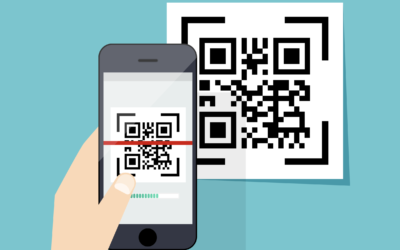By 2025, the number of global e-mail users is expected to reach a total of 4.6 billion – an approximate six hundred thousand increase in users, up from 4 billion in 2020, representing more than half the world’s population. Roughly 306.4 billion emails are estimated to be sent and received EACH DAY in 2020 and this figure is expected to increase to over 376.4 billion daily mails by 2025. But how does that translate to your outreach’s email open rates?
Pay attention to your email open rate when implementing your email marketing. After all, the entire success of your email marketing hinges on people opening your campaigns.
Consider these 5 easy to implement tips to increase your email open rates:
1- Never neglect email deliverability

Think about this: More than 20% of marketing emails never make it to a subscriber’s inbox. That’s 1 in 5 emails!
First things first, make sure your emails are being received. No one will open an email they never received, right? Make sure that emails are actually delivered to your readers. Deliverability is affected by 3 main factors: configuration, content & engagement.
Here are some ways to improve your email deliverability:
- Avoid using any images in the first two emails.
- Use double rather than single opt-in
- Make it easy to unsubscribe
- Avoid using URL shorteners
- Don’t send from a free domain email address
- Don’t send emails with too many images
- Clean your email list. Continue to send emails to subscribers who do not open them, and you’ll end up in the spam folder.
2- Optimize your Subject Line & Preview Text
While a few factors influence your open rate, your subject line is arguably the most influential. Open rates can help you judge the effectiveness of your subject lines.
As a marketer, you work hard to write great copy and create compelling emails. But if you aren’t writing subject lines & preview texts that encourage subscribers to read your messages, your campaigns will fall short.
Benchmark with these best practices:
- Shorten your subject lines: 41 characters or even shorter. Subject lines under 16 characters have significantly higher open rates.
- Preview text length: Aim for 40-50 characters or 8-10 words.
- Identify the device type emails are read on & adjust accordingly: Today, 81% of all emails are now read on mobile devices. In contrast, 80% delete the email immediately if it is not optimized for mobile.
- Personalize: Personalized emails deliver 6X higher conversion rates compared to generic messages. More than half of the world’s population is using email, why should they open yours?
- Avoid spam filters: 69% of people say they judge an email as spam purely on the subject line.
- Tickle people through humor, it is the shortest distance between two strangers.
- Tease readers with an intriguing question: Tap into human psychology.
- A/B test to maximise performance
It’s also a good idea to look at which subject lines have achieved high open rates in your past emails & adapt a similar approach when writing new ones.
3- Perfect your Timing

Email timing & frequency are very important to open rates. Know your audience to know when to send your email campaigns. Make sure to do your research by industry for more accuracy.
Generally, research shows that Monday, Tuesday & Wednesday have the highest open rates and that subscribers are most likely to read your email at either 10am, after they arrive to work, or at 1pm, when catching up on their emails after lunch.
Keep in mind that the type of content being sent, recipient location, age and occupation, all impact this peak time.
Think carefully about when you send your email as timing has significant impact on your email open rates.
4- “From” Name & email address
Studies on email open rates have found that trust is the single most important factor in whether an email is opened or not. For that reason, it’s critical to choose an effective and consistent “From” name and email address.
Choose a name or title that will be recognizable to your subscribers.
Often, that will be the company name or the product or service people have signed up to learn about. Better to use a company/brand name over an individual person’s name, unless that person is the brand. Check out these best practices:
- Never use free webmail addresses
Give your email the best possible chance to reach the inbox, use an email address registered at your organization’s own domain.
- Avoid the no-reply address
Sending from a no-reply address comes across as uncaring to subscribers. It can also be frustrating if they need to reach you about something, and it may even be bad news for delivery rates in the long-term.
Remember that user engagement with your email can help determine where you end up in the inbox.
- Use a valid email address
Use an actual, existing mailbox to collect replies to your newsletters. It’s more than just good manners.
Some email providers, like Gmail, actually look into recipient behavior after an email lands in the inbox. If a subscriber responds to your email, it’s more likely to be marked as important.
- Personalize for the purpose
Give subscribers an idea of what you’re sending them by fitting the “From” email address to the purpose. You could use: marketing@buyfrommepls.com, support@ or billing@.
This splitting of function allows subscribers to manage your emails using their own client filters. It also ensures that if they, for example, write a rule that deletes all emails from marketing@, they will still receive emails from support@ or billing@.
Use a different reply-to address if you’re finding yourself worried about managing too many emails If you’re worried about managing too many email addresses, you can always use a different reply-to address when sending a campaign to redirect replies to fewer mailboxes.
5- Maintain Good List Hygiene

Would you keep talking to your same old friends if they aren’t listening and never reply?
Well, marketers sometimes do, and it’s a big no no.
Ask yourself this question often: is my email relevant to my readers?
Increase the relevancy of your emails by segmenting your email list.
Segmenting your email list based on interests, purchase history, location, etc. will help you create strong email marketing campaigns with tailored messages that meet the specific needs of a specific group of subscribers. And these are the emails that are most likely to be opened.
Manually, you’ll need to create lists based on how many emails it’s been since each person last engaged. You can break your audience into four segments: people who’ve opened an email in the last month and a half, 3 months, 6 months and a year. Set up a workflow or list builder to automate this process.
Once you have these segments, it is so much easier to know what subject lines and messages to write that will entice them to open and engage with your email marketing campaigns.







